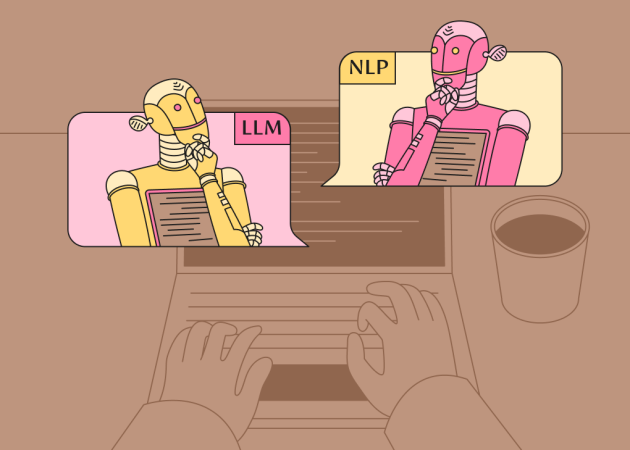
Headless WordPress: A Faster, Smarter, Better Solution for Agencies
Contents
Contents
WordPress has been a respected platform for creating websites for a long time. Its flexibility has empowered countless businesses online. But as digital experiences advance, the underlying technologies that drive them advance as well. This is where headless WordPress enters the picture, offering an approach that greatly benefits digital agencies. So, what is the main idea behind this approach, and why might you consider it? Let’s look at the details.
What is Headless WordPress?
In a traditional WordPress setup, the backend (the familiar WordPress admin dashboard where you create content) and the frontend (the theme that visitors see) are a single, tightly-knit unit. This is often called a “monolith.” It’s simple, but it can be restrictive.
Headless WordPress breaks this monolith apart. It “decouples” the frontend from the backend.
- The Head (Frontend). The visual, user-facing part of the website is removed from WordPress’s control. It’s built separately using modern, high-performance JavaScript frameworks like React, Vue.js, or Svelte.
- The Body (Backend). The powerful and user-friendly WordPress CMS remains the “body,” serving as a content repository.
WordPress exposes its content via its built-in REST API or through the more flexible GraphQL API. The frontend application makes requests to this API to fetch the content it needs and then displays it. Let’s compare this and other key features of “traditional” and headless WordPress.
| Feature | Traditional WordPress | Headless WordPress |
| Frontend | Tightly coupled with WordPress themes | Decoupled; built with modern frameworks |
| Backend | WordPress CMS | WordPress CMS (primarily for content) |
| Presentation | Managed by WordPress themes | Managed by separate frontend application |
| Technology Stack | PHP, WordPress templating languages | PHP (backend), JavaScript frameworks (frontend), APIs |
| Performance | Can be slower due to tightly coupled nature | Generally faster due to decoupled frontend |
| Flexibility | Limited by theme capabilities | Highly flexible for diverse experiences |
| Security | Potential vulnerabilities in both layers | Frontend less vulnerable as it’s static |
| Development | Primarily PHP-focused | Mix of PHP and JavaScript development |
Headless WordPress Examples and Use Cases
Headless architecture opens up new vistas for digital projects that were once challenging or completely impossible. It’s well-suited for:
- SaaS Platforms & Digital Agencies
Technology companies often have two distinct digital needs: a sleek, persuasive marketing website to attract and convert customers, and a complex web application that serves as the actual product. Headless WordPress offers the right approach for this. For example, your marketing team can use the familiar WordPress interface to manage the website, blog, and case studies, while the product team builds the sophisticated user-facing application with a framework like React or Vue, completely independent of the marketing site’s technology.
- Large Enterprises with Multiple Brands
Consider a large corporation that manages a portfolio of different brands, each with its own website. Instead of maintaining dozens of separate WordPress installations, they can use a single, powerful multisite WordPress instance as a central content repository. A headless architecture can then pull content from this central hub to feed each individual brand’s custom frontend design.

- Organizations That Need an Advanced User Experience (UX)
Some companies want their website to be more than just a source of information; they want it to be an experience. This includes companies in creative industries, luxury brands, or any business that wants to “wow” its users with:
- Complex, smooth animations
- App-like page transitions
- Highly interactive data visualizations
- A unique, non-traditional layout
Headless frontend frameworks give you the complete creative freedom to create bespoke experiences without being constrained by the structure of a WordPress theme or sacrificing performance.
- Retail Brands That Work with Multi-Channel Content Delivery
You can manage all their product descriptions, blog posts, and campaigns in one WordPress dashboard and seamlessly push that content to their e-commerce website, a mobile app, in-store digital kiosks, and even smartwatch notifications.
Benefits of Headless WordPress for Agencies
Enhanced Performance and Speed
Performance optimization in traditional WordPress often needs a balance between content management and the speed of frontend delivery. Yes, caching plugins and optimization techniques help, but they work within the constraints of the coupled architecture. Headless WordPress addresses this by separating content management from presentation, allowing agencies to use specialized frontend technologies designed specifically for speed. Modern JavaScript frameworks and static site generators can deliver content faster, with better caching strategies and optimized asset delivery. That’s why agencies can safeguard fast load times no matter how complex the backend is.
Flexible Design and Development Options
Traditional WordPress themes provide structure and functionality, but they can sometimes limit creative expression when clients have specific design requirements. The theme-based approach works well for many projects, though it may require compromises between desired aesthetics and available functionality. Headless WordPress expands creative possibilities by removing frontend constraints entirely. Agencies can choose from any frontend technology — React, Vue, Angular, or static site generators — building completely custom interfaces without theme limitations. This flexibility makes it possible to create user experiences, animations, and layouts that will reflect your brand’s identity.
Improved Security Posture
While WordPress core and the community maintain strong security practices, the attack surface includes all installed plugins and themes. Headless WordPress reduces this exposure by removing the public-facing WordPress interface entirely. The WordPress admin is only available to content creators. The public site operates on a different frontend that doesn’t include any WordPress code. This setup lowers possible attack points and makes security management easier.
Simplified Scaling and Infrastructure
Traditional WordPress scaling needs agencies to manage database performance, server resources, and caching layers at the same time. As traffic rises, they should handle upgrades in various parts of the system and ensure the site stays functional. By contrast, headless WordPress brings in more focused scaling methods. Content delivery can use CDNs and static hosting for top performance, while the WordPress backend can scale separately based on content creation needs. This separation enables agencies to optimize each layer individually and results in a more cost-effective and reliable infrastructure.
Multi-Channel Content Distribution
WordPress excels at content management, though traditional setups typically serve that content through a single website interface. Modern agencies often manage clients who need content across multiple touchpoints — websites, mobile apps, digital displays, or third-party platforms. Headless WordPress transforms the CMS into a content hub that can feed multiple frontend applications simultaneously. Agencies can manage all content in one place, including websites and mobile apps. This setup helps simplify workflows and keep content consistent across channels.
Challenges and Considerations of Headless WordPress
Every powerful tool has its trade-offs. Headless WordPress is no exception. The journey from traditional to headless isn’t always smooth sailing, but understanding the challenges ahead helps you navigate them successfully.
Development Complexity
A major challenge is the shift in modern web development complexity. While your team may be familiar with traditional WordPress development using PHP and themes, a headless approach requires a completely different skill set. This includes modern JavaScript frameworks, API integration, and sophisticated deployment processes.
Recommendation: Assess your team’s capabilities honestly and consider bringing in external headless WordPress experts to fill gaps on initial projects.
Time & Budget Considerations
This complexity translates directly into time and budget considerations. Headless WordPress projects are generally more expensive to build and maintain than traditional WordPress sites. The decoupled architecture involves additional components (e.g. the WordPress backend, the frontend application, hosting infrastructure) that require development and configuration time. Projects typically take longer to complete due to the custom frontend development required, which may represent a noticeable change for clients accustomed to traditional WordPress timelines.
Recommendation: Create detailed project scopes and be transparent with clients about the potentially increased timelines and budget from the very beginning.
SEO Implementation
Then there’s SEO. Traditional WordPress handles much of the heavy lifting automatically — meta tags, sitemaps, and structured data come built-in. In a headless setup, you’re building these features from scratch in your frontend application. While certainly manageable, this task requires developers who understand both modern JavaScript and SEO best practices.
Recommendation: Develop a reusable, pre-configured SEO component for your frontend stack to standardize implementation.
Changes in Content Management Workflow
Content management workflows require adjustment in headless architectures. The standard WordPress preview functionality operates differently when the frontend is decoupled from the backend. Content preview requires additional steps since the WordPress admin interface cannot directly render the frontend application. This separation may require content teams to coordinate with development resources for content validation.
Recommendation: Implement a dedicated preview environment that connects the CMS to the frontend, giving content creators a reliable way to view changes before publishing.

Plugin Compatibility
The plugin ecosystem — one of WordPress’s greatest strengths — becomes a minefield in headless setups. That contact form plugin your team loves? It might not work. The SEO plugin that’s been your go-to solution? You’ll likely need alternatives. Many WordPress plugins assume a traditional setup and simply won’t function in a headless environment. This often means building custom solutions or finding alternative tools, adding complexity and cost to projects.
Recommendation: Audit your essential plugin dependencies early and budget time and resources for finding API-based alternatives or building custom solutions.
Infrastructure and Hosting
Budget-conscious clients also discover that headless WordPress requires hosting for both the WordPress backend and the frontend application. Instead of one hosting bill, there are potentially several — WordPress hosting, frontend hosting, CDN services, and any third-party APIs or services. While the performance benefits often justify the costs, it’s a conversation that needs to happen early in project planning.
Recommendation: Clearly outline the complete hosting architecture and associated costs upfront.
The silver lining? These challenges aren’t roadblocks — they’re growth opportunities. The key is honest assessment of your team’s capabilities, transparent communication with clients about the investment required, and careful project selection as you build expertise. Start with the right project, set proper expectations, and treat the first headless WordPress project as an investment in your agency’s future capabilities.
How to Get Started with Headless WordPress
Making the transition to headless WordPress doesn’t have to be overwhelming. Here’s a practical roadmap to get you started:
Step 1. Launch a pilot project. Find a client who is open to new ideas and has a project that could benefit from headless architecture. Internal projects or redesigns are good choices for gaining experience. Look for projects with clear requirements, such as high performance needs, mobile app integration, or unique design demands that traditional WordPress themes cannot meet.
Step 2. Audit your team’s skills. Assess who on your team knows JavaScript frameworks like React, Vue, or Next.js. Plan training accordingly or partner with a trusted development team. Consider the learning curve: React has the largest community, and Next.js provides excellent performance optimization features. Budget 2-4 weeks for developers to become productive in a new framework. Plan training accordingly or hire a WordPress developer with a trusted tech partner.
Step 3. Select your web development stack. Popular combinations include WordPress + React/Next.js, WordPress + Vue/Nuxt.js, or WordPress + Gatsby. Choose based on your team’s expertise and project requirements. Next.js offers excellent SEO capabilities and performance optimization, Nuxt.js provides great developer experience for Vue teams, and Gatsby excels at static site generation for content-heavy sites.
Step 4. Set up your development environment. You’ll need WordPress as headless CMS (often called the “backend”), a frontend application, and hosting for both. WordPress can run on traditional hosting with REST API enabled, while the frontend typically deploys to platforms like Vercel, Netlify, or AWS. Consider using local development tools like Local by Flywheel for WordPress and appropriate CLI tools for your chosen frontend framework.
Step 5. Plan your content architecture. Decide how content types, custom fields, and media will be structured. Tools like Advanced Custom Fields (ACF) are essential for creating flexible content models. Map out content relationships early — consider how blog posts relate to authors, how products connect to categories, and how media assets will be managed. Design your API endpoints to minimize the number of requests needed to build pages.
Step 6. Implement authentication and security. Set up proper API authentication, secure your WordPress admin, and configure CORS policies. Use application passwords or JWT tokens for API access, integrate proper user roles and permissions, and guarantee your WordPress installation is only accessible to authorized personnel. There are great opportunities to use environment variables for sensitive configuration data and implement rate limiting on API endpoints.
Step 7. Build your deployment pipeline. Modern headless sites often use Git-based workflows with automatic deployments when content changes. You will need to set up webhooks from WordPress to trigger frontend builds when content is published or updated. Popular deployment platforms offer integration with Git repositories and enable automatic deployments on code changes. Lastly, you may consider implementing staging environments to test content and code changes before production deployment.
Step 8. Test thoroughly. Pay special attention to performance, SEO implementation, and content management workflows. Use tools like Lighthouse for performance auditing, test SEO metadata generation, and ensure content editors can work efficiently in the WordPress admin. Validate that all content types render correctly, forms function properly, and error handling works as expected. Test the complete content workflow from creation through publication to ensure editors can work independently.
Key Considerations for Success
Content Editor Training
While developers work with APIs and frontend code, content editors still use the familiar WordPress admin interface. Ensure your content team understands how their work in WordPress translates to the live site, especially for custom fields and media management.
Performance Monitoring
Integrate monitoring for both WordPress backend performance and frontend loading times. Tools like New Relic, DataDog, or simple uptime monitors help identify issues early on in the process.
Backup and Recovery
Develop separate backup strategies for your WordPress content and frontend code. Content backups follow traditional WordPress patterns, while frontend applications require Git-based version control and deployment rollback procedures.
Budget Planning
Factor in hosting costs for both WordPress and frontend applications, potential increased development time for the first few projects, and ongoing maintenance for both systems. Many agencies find the long-term benefits justify the initial investment in learning and setup.
How a Headless WordPress Development Partner Can Help
As a headless WordPress agency, we often find that businesses want to pursue opportunities that are outside their team’s current technical skill set. Whether it’s a complex headless e-commerce implementation or advanced performance optimization, these projects can represent significant growth opportunities.
Access to Specialized Expertise
You can work with tech partners that have proven experience from headless WordPress implementations. Instead of spending weeks on research and trial-and-error, you can work with specialists who have already tackled similar technical problems. This expertise lowers project risk, speeds up timelines, and guarantees better architecture choices from the beginning.
Maintained Client Relationships
White-label development partnerships preserve existing client relationships and expand your service capabilities. All project communications, deliverables, and ongoing support maintain your agency’s branding. Clients experience enhanced technical capabilities without any change to their established agency relationship or communication processes.
Flexible Engagement Models
Partnership arrangements adapt to specific project needs and agency requirements. Some agencies need complete development teams for complex headless implementations, while others require targeted expertise — React developers to complement existing WordPress skills, or performance optimization specialists to ensure headless sites deliver expected speed improvements.
Conclusion
Headless WordPress allows agencies to break free from old constraints and provide more value to their clients. It’s the answer to the demand for a faster and more flexible web. And while the learning curve is real, the benefits far outweigh the challenges if you’re ready to expand your tech capabilities.
Want to explore how headless WordPress can refine your agency’s offerings? Let’s discuss your needs. Get in touch with our team to start the conversation.
FAQs
How does headless WordPress work?
Headless WordPress separates content management from presentation. WordPress handles content creation and storage, delivering it via REST API or GraphQL to any frontend technology. Your content team uses familiar WordPress interfaces while developers build custom user experiences using modern frameworks like React or Vue.
Is headless WordPress a good solution for agencies?
Absolutely. WP Headless allows agencies to deliver faster, more scalable websites while positioning themselves for premium projects. It’s ideal for agencies ready to invest in modern development skills and target clients that need high-performance, scalable WordPress solutions.
Can I use headless WordPress with WooCommerce?
Yes, but with considerations. WooCommerce can serve as a headless backend for product data, but you’ll need to rebuild the shopping experience on the frontend. Many agencies pair WooCommerce with modern e-commerce frameworks for superior performance and user experience. Learn more in our WooCommerce development services.
How does headless WordPress affect SEO?
SEO requires more manual setup since you lose WordPress’s built-in features. However, headless sites often achieve better SEO performance due to faster load times and cleaner code. You’ll need to implement meta tags, sitemaps, and structured data in your frontend application.
How can Beetroot support our transition to headless WordPress?
We provide flexible development partnerships — from complete headless project teams to specific expertise augmentation. Our white-label development approach integrates seamlessly with your processes, helping you deliver complex headless solutions while building your internal capabilities for future projects.
Subscribe to blog updates
Get the best new articles in your inbox. Get the lastest content first.
Recent articles from our magazine
Contact Us
Find out how we can help extend your tech team for sustainable growth.







